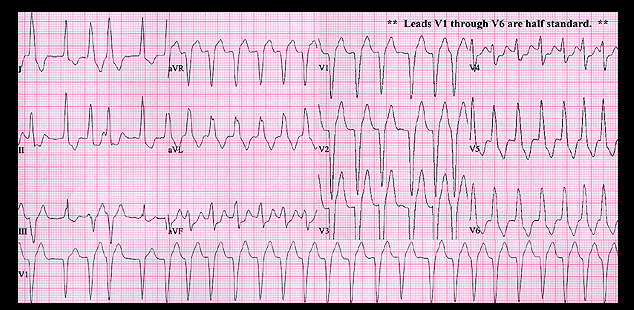
This ECG is from an 86 year old male with calcific aortic stenosis. He was taken to the emergency department because of palpitations, chest pain and shortness of breath. Do you think that the origin of this wide complex tachycardia is ventricular, supraventricular, or both? Note that leads V1-V6 are recorded at half the standard calibration. i.e. 0.5mm = 0.1 mV.
